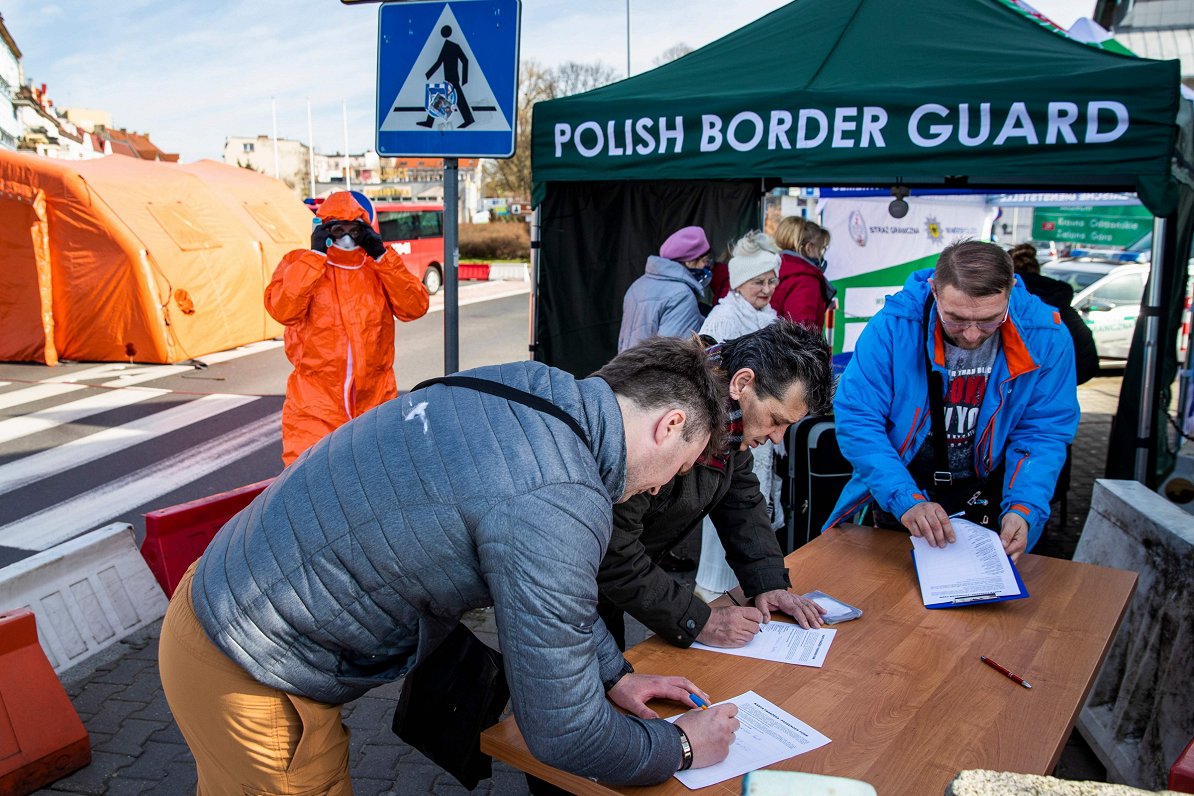But last night more than 500 people were still stuck on the German side of the border as Poland didn't let passengers cars through. Now private cars are to go to Saasnitz on the German side to take a dedicated ferry home, reported LTV.
Previously, it was reported that private transit would be allowed across the border in a dedicated column, but this offer by the Polish authorities failed to materialize.
Tickets to the March 17 ferry in Saasnitz to take people home have already been sold out but another ferry is to arrive March 19.
Foreign Ministry representative Jānis Beķeris told LTV's Tieša runa that a special train to cross Poland was organized for people who don't have their own car.
Baltic residents who want to return home by passenger car will have to travel to Saasnitz, 380 km away from the border crossing at Frankfurt an der Oder, where a ferry will take them to Klaipeda, Lithuania. People who want to be repatriated should arrive as early as 11 a.m. March 17 in Saasnitz, said Beķeris.
As per a government request, the Stenaline company will also operate three ferries from Germany's Travemünde to Liepāja, Latvia on March 17, 23 and 24.
An additional Tallink ferry will be leaving Sassnitz for Ventspils, Latvia at 23.55 on March 18, the Latvian Foreign Ministry said. Tickets have to be purchased in advance at Tallink.lv.
On March 17 Beķeris told Latvian Radio that at about 1 a.m. congestion started clearing at the border as private cars were redirected to ferries. He stressed that all diplomatic channels are being used to resolve the situation.
The Foreign Ministry said about 250 passenger cars with more than 550 people were waiting at the border. The Saasnitz ferry can hold about 250 cars.
After the Polish police barred foreign nationals from traveling through Poland, a queue of several kilometers was formed on the border with Germany. The congestion was accompanied by honking, swearing and even an occasional fight among the people waiting. The queue on the border crossing point near Frankfurt was about 5 km long, eyewitnesses say.
Meanwhile Polish citizens were free to cross into their country, and cars were likewise driving freely from Poland into Germany. That's why conflicts erupted between the passing Poles and Baltic residents waiting to get home. Police helicopters were circling the scene and monitoring the congestion.
Valērijs, a resident of Jūrmala, had gone to the Netherlands to take his son back home. But now the two of them could not get back.
"We've been here for 16 hours. Others have been waiting for more than 24. A bus from Ukraine, completely full, is waiting behind us. [..] Cars with Polish plates have been passing us freely in both directions," said Valērijs.
Another eyewitness released a video claiming that armed Polish police were holding him and other drivers on the border with Poland. Police did provide them with water but instead of passing it out would throw some of it on the ground "like dog food". He and others were prevented from leaving the border area.
Foreign Minister Edgars Rinkēvičs said on Facebook March 17 that according to the Consular Register, 1,900 Latvian residents are awaiting repatriation across Europe, 751 in Asia and Africa and 198 across the Americas.
Rinkēvičs said that extra ferries and charter flights are being sought out for people who are stuck on the border between Poland and Germany.
March 13 saw a raft of sweeping measures introduced in an effort to keep coronavirus at bay as much as possible, with further measures including international travel restrictions announced March 15, as previously reported by LSM. Latvia's borders were closed to public transport services from this morning, with the exception of repatriation services bringing Latvian residents home.
The full rules and regulations are available to read online in English, and all members of the public are urged to read them and comply in a spirit of solidarity. Social interactions are to be reduced to a minimum and frequent and careful hand-washing is urged in a policy characterised as "social distancing".
Relevant information in English is also available at the website of the Disease Prevention and Control Center (SPKC).
In neighboring Estonia ERR News reports the introduction of strict border controls, though as reported by LSM Monday, an exception has been made for residents of the twin cities of Valka-Valga staddling the border itself. Estonia has most recently reported 205 cases of COVID-19.
In Lithuania, LRT News reports the number of confirmed cases has risen to 18 on March 17 from 14 on March 16. and border controls are also being imposed.
(Updated March 17, 16:50 with info about the March 18 Tallink ferry.)





























